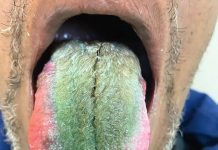Rep. Donna Shalala 
Benjamin Franklin once said, “If you fail to plan, you are planning to fail.” The wisdom of his words has been laid bare in the U.S. over the last several months. The Trump administration’s failure to develop a national comprehensive, coordinated, science-based plan to combat COVID-19 has had disastrous results.
Since the first U.S. case of this novel coronavirus was identified in January, nearly 200,000 Americans have died, more than 6 million have been infected, and nearly every aspect of American life has been disrupted.
While we cannot undo the damage already done, we can keep ourselves from falling into the same trap.
Right now, the world’s best scientists and doctors are working tirelessly on vaccines to neutralize the threat of COVID-19. Once a vaccine—proven safe and effective—is ready, we must deploy it efficiently, effectively and ethically. There is little room for error when so many lives are at stake.
REP. DONNA SHALALA (D-Fla.)
SERVED SINCE: 2019, still in her first term. She was HHS secretary under President Bill Clinton from 1993 to 2001.
HEALTHCARE-RELATED COMMITTEES: House Education and Labor Committee’s Health, Employment, Labor, and Pensions Subcommittee.
She also serves on the Autism Caucus, Black Maternal Health Caucus, COPD Caucus, Cystic Fibrosis Caucus, Lupus Caucus, and End Youth Vaping Caucus.
The National Academy of Medicine has been charged by the National Institutes of Health and the Centers for Disease Control and Prevention to make recommendations for distributing the COVID-19 vaccine. That is why we must use our existing vaccine infrastructure to implement their recommendations.
This year’s flu vaccine distribution system will be seen as a dry run for the forthcoming COVID-19 vaccine.
About 45% of American adults inoculate themselves against the flu each year. If we truly want to get this virus under control, we will need to inoculate at least 70% of adults—approximately 180 million people.
We need to ensure that our current vaccine infrastructure and the distribution system are prepared for the large and uniform rollout that the COVID-19 vaccine will require. The nation’s current flu vaccine distribution system—drugstores, doctor’s offices, hospitals, community health centers, among others—is large and widely accessible. The big challenge in delivering a COVID-19 vaccine will not necessarily be a lack of locations that can administer a shot, but rather making sure we can do it fairly, quickly and smoothly.
Smart and adequate planning is critical for how we will manage the supply chain, provide proper availability of doses in a given area, and inform the public on how, where and when to get a vaccine. These are all issues we can test during the upcoming flu season, nearly upon us.
In addition, a successful flu campaign will allow us to protect valuable health resources. Hospitals have been put under immense strain these past several months. Front-line workers are exhausted, and their resources are still vulnerable to ongoing spikes in COVID cases in different parts of the country.
Flu shots are critical because every case averted will ease the burden on our healthcare system. Every flu patient who walks into an urgent-care facility or an emergency room is going to be considered a COVID-19 case until tested negative. And let’s not overlook the continuing and increasing need for adequate access to rapid testing.
Ultimately, all of this will depend on federal support and resources. The House of Representatives passed legislation to appropriate more money for a substantial increase in flu vaccines and a needed public relations campaign. Now the Senate and President Donald Trump must do their part to make sure we can execute this important trial run.
If, once again, we fail to plan, we shouldn’t be surprised by another disastrous outcome.
The 116th Congress: Policymaking Amid the Pandemic
Source link : https://www.modernhealthcare.com/opinion-editorial/this-years-flu-season-will-be-testing-ground-distributing-covid-vaccine











